Optimizing your Process, Why the Latest Technology May Not be Right for You
An Up Close Look at the Benefits of Heat Welding for Medical Device Thermoplastics,
by Doug Wilkins, CEO, Produxx/TACTX Medical, Inc.
Catheter manufacturing is the backbone of the medical device supply industry. Cutting- edge technologies developed by doctors, scientists and biotechnologists require unique and specialized catheters to enable new processes. In order to keep up, catheter manufacturing equipment is constantly evolving with the intent of offering more cost effective, precise and reliable processes. Recently, over the past 5 years, laser welding has been perceived as the process preferred over hot air welding for bonding thermoplastics during catheter development and manufacturing.
In the catheter manufacturing industry, original Equipment Manufacturers (OEM)s need to be able to meet a wide range specifications and requirements to meet growing demand. As CEO of Produxx Medical, the third largest catheter OEM in the world, Doug Wilkins knows how important it is to stay abreast of the latest in medical device supply equipment and technology. In dealing with a wide range of clientele, from the largest medical device companies, to 2-person start-ups, Wilkins knows what his customers are looking for and has learned from 15 years of industry experience how to best meet that demand. He also knows that despite what customers often think, newer isn’t always better.
“I walk clients through my facility on a regular basis and in touring my clean room, certain customers look for what they consider “state of the art” catheter manufacturing equipment. I often have to explain to them that just because it’s new, doesn’t make it better for their particular process.”
Wilkins has identified several reasons for this assessment. The primary is that hot air system welding is far more versatile then laser technology. For balloon development especially, it’s much easier to change sizes while retaining bond length options and range of pliability offered by the laser welding process. Nozzles are easy to change in hot air systems, laser beams don’t offer that variability. “With the wide diversity of projects we handle daily, a high level of flexibility is imperative”. An additional benefit is the simplicity of lining a balloon to ensure adequate protection from breakage, which technicians find difficult to position during laser welding.
Standard hot air stations such as those manufactured by Beahm Designs, Produxx Medical’s preferred supplier, bypass the steep learning curve associated with laser welding. “Training an operator to use a laser welding system can be a two-month process, depending on the technician and project. We can’t absorb that expense and still be cost-effective”. OEMs benefit from the benefits of developing a process around a hot
568 Division St. Campbell Ca. 95008 (t) 408-871-2351 (f) 408-871-8295 www.beahmdesigns.com
air system. The same operator can more from system to system, simplifying cross training.
Laser welding should not be discounted entirely. Of course there are applications for which the laser process is still superior. Very high volume manufacturers can absorb the capital expenditure and will benefit from the speed and automation laser welding systems offer. However, hot air systems can be automated as well. According to Doug Wilkins “ The misconception remains that hot air welding is not state-of-the-art, when from a product stand point, it’s the same”. For most catheter manufacturers, the benefits of laser welding are too negligible to justify the expense”, or to put it more succinctly, newer isn’t always better.
568 Division St. Campbell Ca. 95008 (t) 408-871-2351 (f) 408-871-8295 www.beahmdesigns.com





